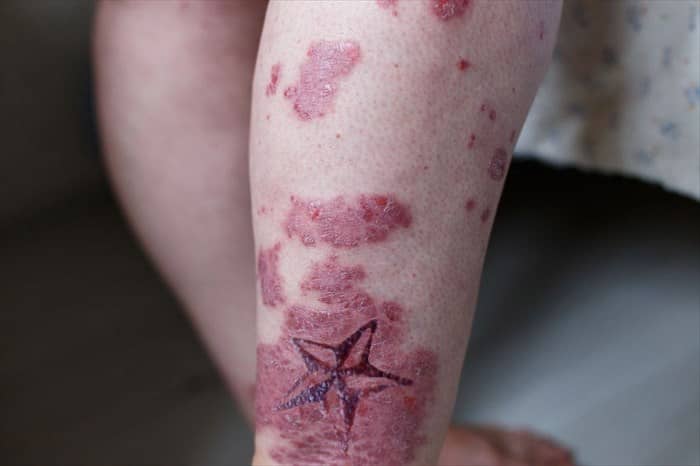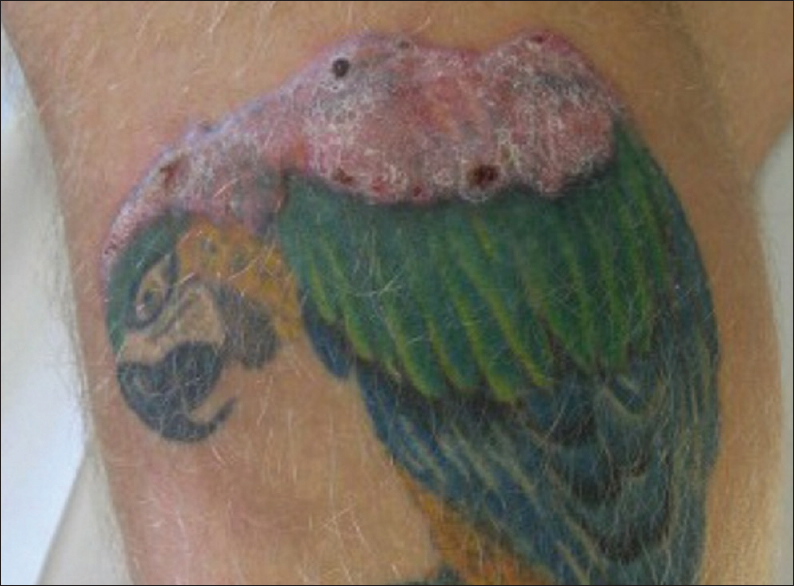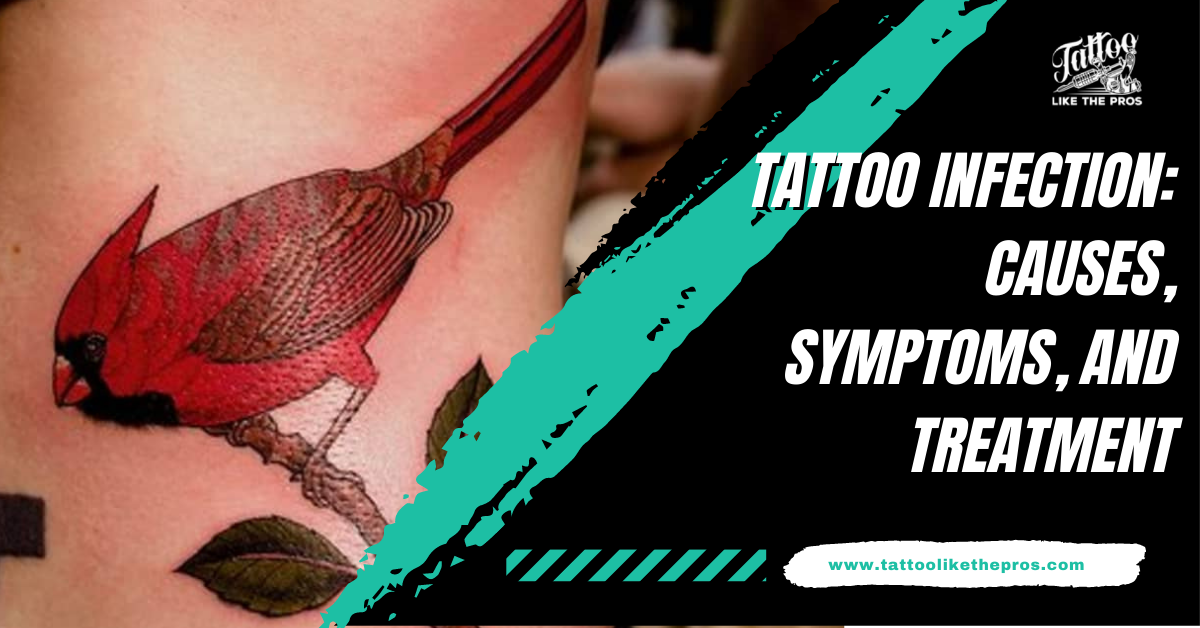Tattoos have increasingly become popular in the last couple of decades. More importantly, they have widely become an accepted part of society. There was a time when getting a tattoo was considered delinquent behavior, which is surprising today as tattoos have always been associated with human civilizations.
One can trace the roots of tattoos and their usage back to the stone age, and they have had quite a significance across the world, not just limited to one region of the globe. Today, many individuals wear tattoos to signify something important to them. Some others chose their star signs, compasses, various animals, and beloved ones to ink on their bodies. The choices are many, and honestly, one cannot go wrong with any of the choices they make.

Yes, tattoo infection is a thing that could even become life-threatening. However, you can possibly stop having a tattoo infection with preventive measures. But before you go and get a tattoo inked on your body, you should first learn about tattoo infection, its causes, symptoms, and treatment.
What Exactly is Tattoo Infection?

Suppose you are getting a tattoo inked on your body. In that case, there is a possibility, a minute one, of you getting a tattoo infection. According to a study conducted by Statista, around 40 percent of US citizens aged between 18 and 65 have one or more tattoos inked on their bodies. It is an astronomical number, especially if one keeps the overall population in their minds. However, around 0.5 to 0.6 percent of this number has experienced tattoo infections after getting their tattoo inked. There are several types of tattoo infections. From a simple mind irritation to full-blown body pain that could last for several days, and in some cases, even forever. So, it is a topic worth knowing, especially for those who are just getting their very first tattoo.
What Are the Causes of Tattoo Infection?

There are several ways one can have an infection because of getting body inked. First, inking can easily lead to infection, primarily due to bacteria or any other harmful substances through the broken skin. In simpler terms, anything could cause tattoo infection, and there is no sure way for one to prevent themselves from getting it.
But several factors could severely increase the likelihood of getting a tattoo infection if one is not careful of it.
- Your tattoo artist is making use of contaminated ink for your tattoo.
- Any unhygienic practice by the tattoo artist, including but not limited to taking sufficient protection for the tattoo inking process.
- Insufficient aftercare of the tattooed area.
- Trying to DIY the tattoo work.
- A weak immune system.
- Pre-existing conditions like eczema.
While one can easily avoid some of the above-listed factors that could increase the likelihood of getting a tattoo infection, not everything is avoidable. The best practice one can follow here is by using a reputed tattoo artist and tattoo parlor for their tattoo ink.
How Can one Identify an Infected Tattoo?
There are several ways that one can identify a tattoo infection. The easiest way to do that is by noticing the tattoo area and its surroundings. It is the first sign if the tattoo and its surrounding areas have a red rash or bumpy skin. Even if you are only experiencing irritated skin, it could signify tattoo infection. The best course of action would be to reach out to your doctor.

Now you might be asking, isn’t skin irritation common after inking a tattoo ? And that is true; it is common for one to experience some irritation after getting body inked, especially if they have sensitive skin. But if the irritation persists for more than a couple of days, then you might have a problem.
Here are some of the more common symptoms of a tattoo infection. And you should immediately get checked out if you are experiencing any of the following.
- Fever
- Shivering
- Swelling of the tattooed area
- Pus coming out from the tattooed area
- Red lesions on the tattoo or around the tattooed area
- Red steaking
- Hard raised tissue
These are some of the more common symptoms of tattoo infection, and you should keep a keen eye on them.
Different Types Of Tattoo Infections
Well, there is a lot to know about when it comes to figuring out different types of tattoo infections. Here are some of the more common types of tattoo infections that you should be aware of.
#1. Infection Due to Contaminated Ink

This is simply the most common type of tattoo infection that one can develop. As the name suggests, this occurs due to contaminated ink on a person’s body. The gist here is that if the ink is contaminated, it could cause an infection. A toxic ink could be anything, from diluted ink to unsterilized water. Contaminated ink infection could result in one experiencing swelling, rash, and pus formation at and around the tattooed area.
#2. Bacterial Or Viral Infection

Contaminated ink is not the only way one can get a tattoo infection. Bacterial or viral infections are another common way for one to get a tattoo infection. This is caused when bacteria or viruses get inside the body through the broken skin. Not many of these bacterial or viral infections are deadly, but one should not take them casually. Sepsis, herpes simplex, syphilis, and Viral hepatitis are some of the bacterial and viral infections and persisting complications. Although these cases are sporadic, one should not neglect their symptoms after getting their tattoo.
#3. Staph Infection

Staph infection is another type of bacterial infection and, in most cases, can be treated by a course of antibiotics. But that is not always the case. In rare cases, staph infection gets into the bloodstream and into one’s internal organs, which is definitely not good.
#4. Effects of Tattoo Ink

Even the color of the tattoo ink you are planning on using could be a factor that will impact the likelihood of you getting a tattoo infection. For example, red ink tattoo is widely considered in the tattoo community as a riskier option. You would find many tattoo artists flatly denying the use of any red ink in their work. The reason is that red ink contains mercury sulfide and other coloring substances, leading to infection. So, before opting for a tattoo design, research the effects of using colored ink.
#5. Other Reactions

There are other kinds of reactions that you should be aware of. For example, there have been noted cases of one developing allergic reactions such as photoallergic dermatitis, allergic contact dermatitis, and even skin complications like psoriasis.
How to Treat an Infected Tattoo?

Once detected that you have an infected tattoo, the next thing to do is treat it. A tattoo infection is rarely fatal, but doctor consultation is necessary for optimal treatment. But going for an at-home treatment without any doctor consultation, regardless of the severity of the tattoo infection, is not the right way. So the very first you need to do is connect to a doctor to diagnose your condition correctly.
There are several ways one can treat an infected tattoo.
#1. Over the Counter
This is the standard way for one to treat tattoo infection. First, the doctor would prescribe over-the-counter anti-inflammatory medications, or NSAIDs, which will help you combat the infection and provide you relief from inflammation and pain. It would be best not to ingest any anti-inflammation pills without your doctor’s recommendation. Then, your doctor would chart a course for your treatment, and generally, it would take around 2 to 3 days, and a week at most, for one to get over their tattoo infection.
But that is not always the case, as it has been observed in some tattoo infection cases, particularly in the case of staph infection. The infection could not be treated with a straightforward course of antibiotics and spreads into the bloodstream and ultimately to one’s internal organs. This could prove to be quite deadly. And is also one of the reasons why over-the-counter treatment without a doctor’s consultation is not an intelligent way for one to go.
#2. Topical Ointments or Creams
Another common way for one to treat their tattoo infection is applying topical ointment or creams. This is done primarily in conjunction with other treatments prescribed by the doctors and to provide immediate relief to the infected area, i.e., the tattooed area. Topical ointments or creams are used to eliminate any discomfort they might face due to the tattoo infection. Topical ointments or creams ensure no itching or drying out, especially in the case of a mild tattoo infection. Your doctor would suggest a fragrance-free hypoallergenic ointment to manage your symptoms.
But one thing to keep in mind here is that topical ointments or creams are only helpful in avoiding any itching or drying out. This is possible only in cases of mild tattoo infection only. They are not very helpful to one in cases of severe tattoo infections.
#3. Antihistamine Medications
When it comes to combating allergic reactions, you could not find a better solution than antihistamine medications. The medicine can help you ease mild allergic symptoms. They are pretty commonly used in cases of tattoo infections as well. In the cases of faint rash or red bumps, you would be immediately advised to take antihistamine medicines like Benadryl.
#4. Antibiotics Medicines
You would likely be prescribed antibiotics medication that will help you manage the infection in the case of a tattoo infection. After a thorough assessment of your condition, your doctor would determine whether or not you need to be administered an immediate dose of antibiotics medication. There are varying courses of antibiotics medication that you will be asked to follow to the letter. It will depend on the severity of your tattoo infection.
In most cases, the doctor would prescribe a course that would last for a week at most. But there have been documented cases of antibiotics courses that could last for even months. Do not self-medicate yourself regardless of how mild you think the symptoms are. If not properly treated, it could easily lead to staph infection or other severe infections.
#5. Surgery
And lastly, we have the option of surgical procedure. Now you might be asking why one would need to go through a surgical procedure to get rid of a case of a tattoo infection. What might the surgery even do? Well, the surgery is used to obliterate the infected tissue and repair the skin that has been damaged in the tattoo inking procedure. Naturally, this is a very extreme situation and would result in one losing their precious tattoo as well. But the good news here is that this procedure’s necessity is also rare. So, it is very unlikely that your tattoo infection would lead to you requiring a surgical procedure.
Regardless of the symptoms you might be experiencing or how mild the pain in your body is, you need to reach out to a doctor immediately to confirm the diagnosis and its severity and for the correct course of treatment for you. Do not even think about self-medicating, as it could lead to several complications and even life-threatening situations. Prevention is better than the cure!
While in most cases, tattoo infections are quite easy to cure. With one only needing to ingest medications and treat the affected area for a day or two at most, it is something one can live without experiencing. Luckily there are pretty easy ways to prevent getting a tattoo infection. Here are some of the easiest ways to prevent tattoo infection.
#6. Ensure that Tattoo Ink does Not Contain any Harmful Ingredients
Now, this is obviously a pretty big ask, especially considering tattoo inks are not regulated or have any kind of FDA approval. But the only thing you need to make sure of here is to ensure that the ink does not contain any ingredient that you might be allergic to. How to do that? Well, get an allergy test done before visiting your tattoo artist, and then thoroughly inspect the ink that they use. Even sending your test result to your tattoo artist would be enough. This is because any reputed tattoo artist would recommend you undergo an allergy test first before going under the needle.
#7. Keep Away from Colored Inks
Yes, colored inks increase the likelihood of one getting infected by manifolds, and that is especially true in the case of red inks. Colored inks contain several chemical substances necessary for coloration. Still, they can significantly impact the chances of getting a tattoo infection. While they might be the boring options, Black inks are the safest ink that one can go for. The use of black inks significantly reduces the chances of one getting a tattoo infection primarily, as it does not contain any coloring agents.
#8. Sterilized Needle
One of the most common ways for one to tattoo infection is by way of a contaminated needle. Bacteria and viruses easily pass into the body through the way of needles used in the inking process. So, the best way one can ensure prevention against tattoo infection is by making sure that the tattoo artist is using a sterilized needle for your inking.
#9. Get Your Tattoo from a Reputed Tattoo Parlor
The more popular the tattoo is getting, one can find more and more professionals in the industry providing tattoo at-home services. But it would be the best course of action for you to make use of a reputed and licensed tattoo parlor. Licensed tattoo parlors are subject to inspection by various safety agencies to meet certain safety standards. So, naturally, you can expect these tattoo parlors to make use of sterilized tattoo needles and utilize safety procedures in their work as well.
#10. Make Sure that You Follow the Aftercare Routine to the Letter
As soon as your tattoo inking procedure is finished, your tattoo artists will give our instructions to follow for the proper aftercare. Naturally, you should follow them to the letter to get the best possible result in your tattoo. This is also to ensure that your tattoo does not get infected during the healing period.
Instructions to Follow
- Do not remove the bandages for at least 3 to 5 hours
- Wash hands with antibacterial soap and water
- Only use a clean and dry washcloth to remove blood or excess pigment
- Let the tattooed area air dry for a few minutes
- Do not rub the affected area
- Put an ointment and dab off the excess from the tattooed area
- Follow these above steps for at least a couple of days, as prescribed by the tattoo artist
Conclusion
Tattoo infection is an extremely rare complication, and it is also easily preventable. But suppose you are experiencing any symptoms of the same. In that case, you should immediately reach out to a doctor for diagnosis, regardless of how mild the infection seems to be.
